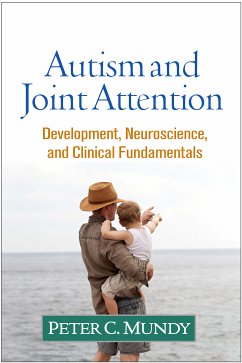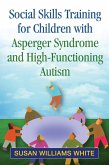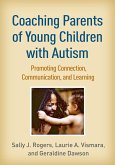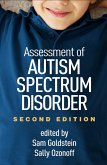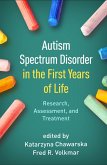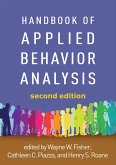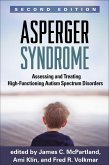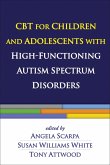Peter C. Mundy
Autism and Joint Attention (eBook, ePUB)
Development, Neuroscience, and Clinical Fundamentals
46,95 €
46,95 €
inkl. MwSt.
Sofort per Download lieferbar

23 °P sammeln
46,95 €
Als Download kaufen

46,95 €
inkl. MwSt.
Sofort per Download lieferbar

23 °P sammeln
Jetzt verschenken
Alle Infos zum eBook verschenken
46,95 €
inkl. MwSt.
Sofort per Download lieferbar
Alle Infos zum eBook verschenken

23 °P sammeln
Peter C. Mundy
Autism and Joint Attention (eBook, ePUB)
Development, Neuroscience, and Clinical Fundamentals
- Format: ePub
- Merkliste
- Auf die Merkliste
- Bewerten Bewerten
- Teilen
- Produkt teilen
- Produkterinnerung
- Produkterinnerung

Bitte loggen Sie sich zunächst in Ihr Kundenkonto ein oder registrieren Sie sich bei
bücher.de, um das eBook-Abo tolino select nutzen zu können.
Hier können Sie sich einloggen
Hier können Sie sich einloggen
Sie sind bereits eingeloggt. Klicken Sie auf 2. tolino select Abo, um fortzufahren.

Bitte loggen Sie sich zunächst in Ihr Kundenkonto ein oder registrieren Sie sich bei bücher.de, um das eBook-Abo tolino select nutzen zu können.
From a preeminent researcher, this book looks at the key role of joint attention in both typical and atypical development. Peter C. Mundy shows that no other symptom dimension is more strongly linked to early identification and treatment of autism spectrum disorder (ASD). He synthesizes a wealth of knowledge on how joint attention develops, its neurocognitive underpinnings, and how it helps to explain the learning, language, and social-cognitive features of ASD across the lifespan. Clinical implications are explored, including reviews of cutting-edge diagnostic methods and targeted treatment approaches. …mehr
- Geräte: eReader
- ohne Kopierschutz
- eBook Hilfe
Andere Kunden interessierten sich auch für
![Social Skills Training for Children with Asperger Syndrome and High-Functioning Autism (eBook, ePUB) Social Skills Training for Children with Asperger Syndrome and High-Functioning Autism (eBook, ePUB)]() Susan Williams WhiteSocial Skills Training for Children with Asperger Syndrome and High-Functioning Autism (eBook, ePUB)26,95 €
Susan Williams WhiteSocial Skills Training for Children with Asperger Syndrome and High-Functioning Autism (eBook, ePUB)26,95 €![Coaching Parents of Young Children with Autism (eBook, ePUB) Coaching Parents of Young Children with Autism (eBook, ePUB)]() Sally J. RogersCoaching Parents of Young Children with Autism (eBook, ePUB)35,95 €
Sally J. RogersCoaching Parents of Young Children with Autism (eBook, ePUB)35,95 €![Assessment of Autism Spectrum Disorder (eBook, ePUB) Assessment of Autism Spectrum Disorder (eBook, ePUB)]() Assessment of Autism Spectrum Disorder (eBook, ePUB)42,95 €
Assessment of Autism Spectrum Disorder (eBook, ePUB)42,95 €![Autism Spectrum Disorder in the First Years of Life (eBook, ePUB) Autism Spectrum Disorder in the First Years of Life (eBook, ePUB)]() Autism Spectrum Disorder in the First Years of Life (eBook, ePUB)36,95 €
Autism Spectrum Disorder in the First Years of Life (eBook, ePUB)36,95 €![Handbook of Applied Behavior Analysis (eBook, ePUB) Handbook of Applied Behavior Analysis (eBook, ePUB)]() Handbook of Applied Behavior Analysis (eBook, ePUB)62,95 €
Handbook of Applied Behavior Analysis (eBook, ePUB)62,95 €![Asperger Syndrome (eBook, ePUB) Asperger Syndrome (eBook, ePUB)]() Asperger Syndrome (eBook, ePUB)55,95 €
Asperger Syndrome (eBook, ePUB)55,95 €![CBT for Children and Adolescents with High-Functioning Autism Spectrum Disorders (eBook, ePUB) CBT for Children and Adolescents with High-Functioning Autism Spectrum Disorders (eBook, ePUB)]() CBT for Children and Adolescents with High-Functioning Autism Spectrum Disorders (eBook, ePUB)28,95 €
CBT for Children and Adolescents with High-Functioning Autism Spectrum Disorders (eBook, ePUB)28,95 €-
-
-
From a preeminent researcher, this book looks at the key role of joint attention in both typical and atypical development. Peter C. Mundy shows that no other symptom dimension is more strongly linked to early identification and treatment of autism spectrum disorder (ASD). He synthesizes a wealth of knowledge on how joint attention develops, its neurocognitive underpinnings, and how it helps to explain the learning, language, and social-cognitive features of ASD across the lifespan. Clinical implications are explored, including reviews of cutting-edge diagnostic methods and targeted treatment approaches.
Dieser Download kann aus rechtlichen Gründen nur mit Rechnungsadresse in A, D ausgeliefert werden.
Hinweis: Dieser Artikel kann nur an eine deutsche Lieferadresse ausgeliefert werden.
Produktdetails
- Produktdetails
- Verlag: Guilford Publications
- Seitenzahl: 350
- Erscheinungstermin: 13. Januar 2016
- Englisch
- ISBN-13: 9781462525164
- Artikelnr.: 47978508
- Verlag: Guilford Publications
- Seitenzahl: 350
- Erscheinungstermin: 13. Januar 2016
- Englisch
- ISBN-13: 9781462525164
- Artikelnr.: 47978508
- Herstellerkennzeichnung Die Herstellerinformationen sind derzeit nicht verfügbar.
Peter C. Mundy, PhD, is Professor and Lisa Capps Endowed Chair of Neurodevelopmental Disorders and Education in the School of Education and the Department of Psychiatry and Behavioral Sciences at the University of California, Davis (UC Davis). He is also Director of Educational Research at the UC Davis MIND Institute. A developmental and clinical psychologist, Dr. Mundy has been working on defining the nature of autism and developmental disabilities for over 30 years. An author of the Early Social Communication Scales, which was selected by Autism Speaks as a recommended measure for clinical trials, he is an associate editor of Autism Research and serves as an editorial board member or consulting editor for numerous other journals.
1. A Brief History of the Concept of Autism
*Autism and the Myth of the Unresponsive Child
*The Demise of the Unresponsive Prototype
*The Dimensional Approach to the Social Nature of Autism
*The Fuzzy Nature of Human Nature
*The Moderator Model of Autism
2. The Dimension of Joint Attention and ASD Diagnosis
*Joint Attention and the Research Domain Criteria
*Joint Attention and the Evolution of the DSM Criteria for ASD
3. Joint Attention in Symptom Assessment and Risk Identification
*Joint Attention and Defining the Social Nature of Autism
*The Development of Clinical Measures of Joint Attention
*Applications of Joint Attention Measures to the Study of ASD
*Risk identification in Infant Siblings
*Joint Attention in Other Conditions
4. Joint Attention, Learning, and Social Cognition
*Joint Attention, Mentalizing, and Autism
*The Social-Cognitive Hypothesis of Joint Attention
*Joint Attention, Developmental Dissociations, and Timing
*An Alternative Theory of Joint Attention and Social Cognition
*Gender Differences and Joint Attention
*Joint Attention in Childhood
*Summary and Conclusion
5. Social Orienting, Joint Attention, and Social Motivation
*Three Questions about the Development of Joint Attention
*The Many Dimensions of the Social Phenotype of ASD
*When Does Joint Attention Develop?
*Joint Attention, Language Development, and Social Orienting
*Joint Attention and Cognitive Processing in Infancy
6. Early Intervention, Joint Attention, and ASD
*Models of Early Intervention
*Approaches to Joint Attention Intervention
*The JASPER Intervention
*Joint Attention and Intervention for Older Verbal Children
*Summary and Conclusions
7. Neurodevelopment of Joint Attention
*The Need for Caution in the Cognitive Neuroscience of ASD
*Choosing Dimensions in the Developmental Cognitive Neuroscience of ASD
*Evidence for the Neural Network of Joint Attention
*Imaging Studies of Joint Attention in Autism Spectrum Development
*The Overlap between the Joint Attention and Social-Cognitive Networks
*The Dynamic Development of Behavior and Social-Cognitive Neural Systems
*A Functional Appraisal of the Joint Attention Neural Network
*Summary and Conclusions
8. The Genetics of Joint Attention and Joint Engagement
*Joint Attention/Joint Engagement, Motivation, and Molecules
*The Genetics of JAJE: An Overview
*QTL Linkage and Joint Attention
*Oxytocin and Vasopressin Pathways and Joint Attention
*Animal Models of Joint Attention
*Joint Attention, Gene Interactions, and Genetic Repurposing
*Informing the Dimensional Approach to Autism
References
Index
*Autism and the Myth of the Unresponsive Child
*The Demise of the Unresponsive Prototype
*The Dimensional Approach to the Social Nature of Autism
*The Fuzzy Nature of Human Nature
*The Moderator Model of Autism
2. The Dimension of Joint Attention and ASD Diagnosis
*Joint Attention and the Research Domain Criteria
*Joint Attention and the Evolution of the DSM Criteria for ASD
3. Joint Attention in Symptom Assessment and Risk Identification
*Joint Attention and Defining the Social Nature of Autism
*The Development of Clinical Measures of Joint Attention
*Applications of Joint Attention Measures to the Study of ASD
*Risk identification in Infant Siblings
*Joint Attention in Other Conditions
4. Joint Attention, Learning, and Social Cognition
*Joint Attention, Mentalizing, and Autism
*The Social-Cognitive Hypothesis of Joint Attention
*Joint Attention, Developmental Dissociations, and Timing
*An Alternative Theory of Joint Attention and Social Cognition
*Gender Differences and Joint Attention
*Joint Attention in Childhood
*Summary and Conclusion
5. Social Orienting, Joint Attention, and Social Motivation
*Three Questions about the Development of Joint Attention
*The Many Dimensions of the Social Phenotype of ASD
*When Does Joint Attention Develop?
*Joint Attention, Language Development, and Social Orienting
*Joint Attention and Cognitive Processing in Infancy
6. Early Intervention, Joint Attention, and ASD
*Models of Early Intervention
*Approaches to Joint Attention Intervention
*The JASPER Intervention
*Joint Attention and Intervention for Older Verbal Children
*Summary and Conclusions
7. Neurodevelopment of Joint Attention
*The Need for Caution in the Cognitive Neuroscience of ASD
*Choosing Dimensions in the Developmental Cognitive Neuroscience of ASD
*Evidence for the Neural Network of Joint Attention
*Imaging Studies of Joint Attention in Autism Spectrum Development
*The Overlap between the Joint Attention and Social-Cognitive Networks
*The Dynamic Development of Behavior and Social-Cognitive Neural Systems
*A Functional Appraisal of the Joint Attention Neural Network
*Summary and Conclusions
8. The Genetics of Joint Attention and Joint Engagement
*Joint Attention/Joint Engagement, Motivation, and Molecules
*The Genetics of JAJE: An Overview
*QTL Linkage and Joint Attention
*Oxytocin and Vasopressin Pathways and Joint Attention
*Animal Models of Joint Attention
*Joint Attention, Gene Interactions, and Genetic Repurposing
*Informing the Dimensional Approach to Autism
References
Index
1. A Brief History of the Concept of Autism
*Autism and the Myth of the Unresponsive Child
*The Demise of the Unresponsive Prototype
*The Dimensional Approach to the Social Nature of Autism
*The Fuzzy Nature of Human Nature
*The Moderator Model of Autism
2. The Dimension of Joint Attention and ASD Diagnosis
*Joint Attention and the Research Domain Criteria
*Joint Attention and the Evolution of the DSM Criteria for ASD
3. Joint Attention in Symptom Assessment and Risk Identification
*Joint Attention and Defining the Social Nature of Autism
*The Development of Clinical Measures of Joint Attention
*Applications of Joint Attention Measures to the Study of ASD
*Risk identification in Infant Siblings
*Joint Attention in Other Conditions
4. Joint Attention, Learning, and Social Cognition
*Joint Attention, Mentalizing, and Autism
*The Social-Cognitive Hypothesis of Joint Attention
*Joint Attention, Developmental Dissociations, and Timing
*An Alternative Theory of Joint Attention and Social Cognition
*Gender Differences and Joint Attention
*Joint Attention in Childhood
*Summary and Conclusion
5. Social Orienting, Joint Attention, and Social Motivation
*Three Questions about the Development of Joint Attention
*The Many Dimensions of the Social Phenotype of ASD
*When Does Joint Attention Develop?
*Joint Attention, Language Development, and Social Orienting
*Joint Attention and Cognitive Processing in Infancy
6. Early Intervention, Joint Attention, and ASD
*Models of Early Intervention
*Approaches to Joint Attention Intervention
*The JASPER Intervention
*Joint Attention and Intervention for Older Verbal Children
*Summary and Conclusions
7. Neurodevelopment of Joint Attention
*The Need for Caution in the Cognitive Neuroscience of ASD
*Choosing Dimensions in the Developmental Cognitive Neuroscience of ASD
*Evidence for the Neural Network of Joint Attention
*Imaging Studies of Joint Attention in Autism Spectrum Development
*The Overlap between the Joint Attention and Social-Cognitive Networks
*The Dynamic Development of Behavior and Social-Cognitive Neural Systems
*A Functional Appraisal of the Joint Attention Neural Network
*Summary and Conclusions
8. The Genetics of Joint Attention and Joint Engagement
*Joint Attention/Joint Engagement, Motivation, and Molecules
*The Genetics of JAJE: An Overview
*QTL Linkage and Joint Attention
*Oxytocin and Vasopressin Pathways and Joint Attention
*Animal Models of Joint Attention
*Joint Attention, Gene Interactions, and Genetic Repurposing
*Informing the Dimensional Approach to Autism
References
Index
*Autism and the Myth of the Unresponsive Child
*The Demise of the Unresponsive Prototype
*The Dimensional Approach to the Social Nature of Autism
*The Fuzzy Nature of Human Nature
*The Moderator Model of Autism
2. The Dimension of Joint Attention and ASD Diagnosis
*Joint Attention and the Research Domain Criteria
*Joint Attention and the Evolution of the DSM Criteria for ASD
3. Joint Attention in Symptom Assessment and Risk Identification
*Joint Attention and Defining the Social Nature of Autism
*The Development of Clinical Measures of Joint Attention
*Applications of Joint Attention Measures to the Study of ASD
*Risk identification in Infant Siblings
*Joint Attention in Other Conditions
4. Joint Attention, Learning, and Social Cognition
*Joint Attention, Mentalizing, and Autism
*The Social-Cognitive Hypothesis of Joint Attention
*Joint Attention, Developmental Dissociations, and Timing
*An Alternative Theory of Joint Attention and Social Cognition
*Gender Differences and Joint Attention
*Joint Attention in Childhood
*Summary and Conclusion
5. Social Orienting, Joint Attention, and Social Motivation
*Three Questions about the Development of Joint Attention
*The Many Dimensions of the Social Phenotype of ASD
*When Does Joint Attention Develop?
*Joint Attention, Language Development, and Social Orienting
*Joint Attention and Cognitive Processing in Infancy
6. Early Intervention, Joint Attention, and ASD
*Models of Early Intervention
*Approaches to Joint Attention Intervention
*The JASPER Intervention
*Joint Attention and Intervention for Older Verbal Children
*Summary and Conclusions
7. Neurodevelopment of Joint Attention
*The Need for Caution in the Cognitive Neuroscience of ASD
*Choosing Dimensions in the Developmental Cognitive Neuroscience of ASD
*Evidence for the Neural Network of Joint Attention
*Imaging Studies of Joint Attention in Autism Spectrum Development
*The Overlap between the Joint Attention and Social-Cognitive Networks
*The Dynamic Development of Behavior and Social-Cognitive Neural Systems
*A Functional Appraisal of the Joint Attention Neural Network
*Summary and Conclusions
8. The Genetics of Joint Attention and Joint Engagement
*Joint Attention/Joint Engagement, Motivation, and Molecules
*The Genetics of JAJE: An Overview
*QTL Linkage and Joint Attention
*Oxytocin and Vasopressin Pathways and Joint Attention
*Animal Models of Joint Attention
*Joint Attention, Gene Interactions, and Genetic Repurposing
*Informing the Dimensional Approach to Autism
References
Index
